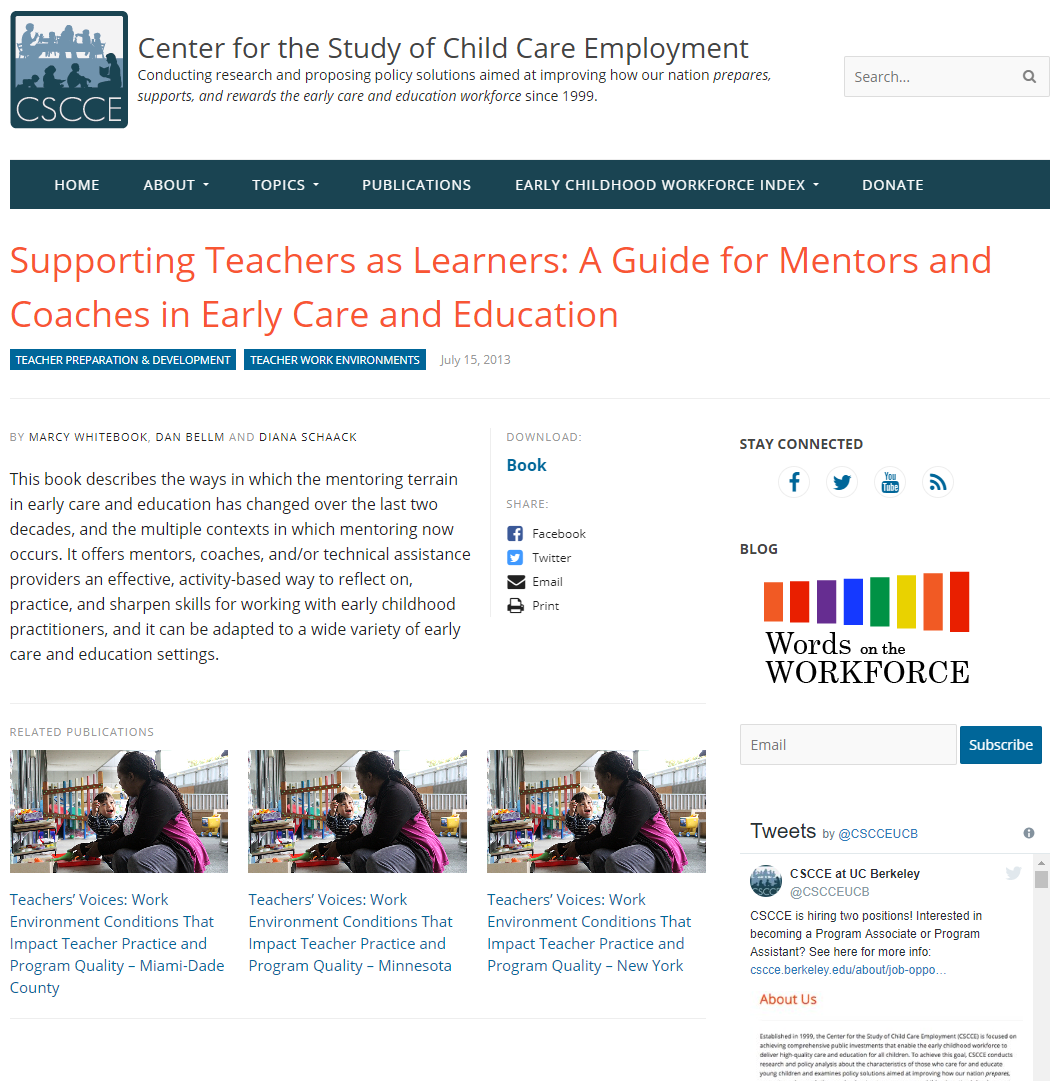Early Childhood Preparation for School Leaders: Lessons from New Jersey Principal Certification Programs

This report details the findings of the Early Childhood Higher Education Inventory: Principal Certification Programs [Principal Inventory] (CSCCE, 2016) conducted in the state of New Jersey in 2016. The Principal Inventory is a research tool used to assess the inclusion of course content and field experiences related to early education in preparation programs for educational professionals seeking to become principals. The report outlines an approach to reconceptualizing and strengthening preparation and support for principal candidates and current school leaders.
Publication:Center for the Study of Child Care Employment Institute for Research on Labor and Employment University of California, Berkeley
cscce.berkeley.edu










